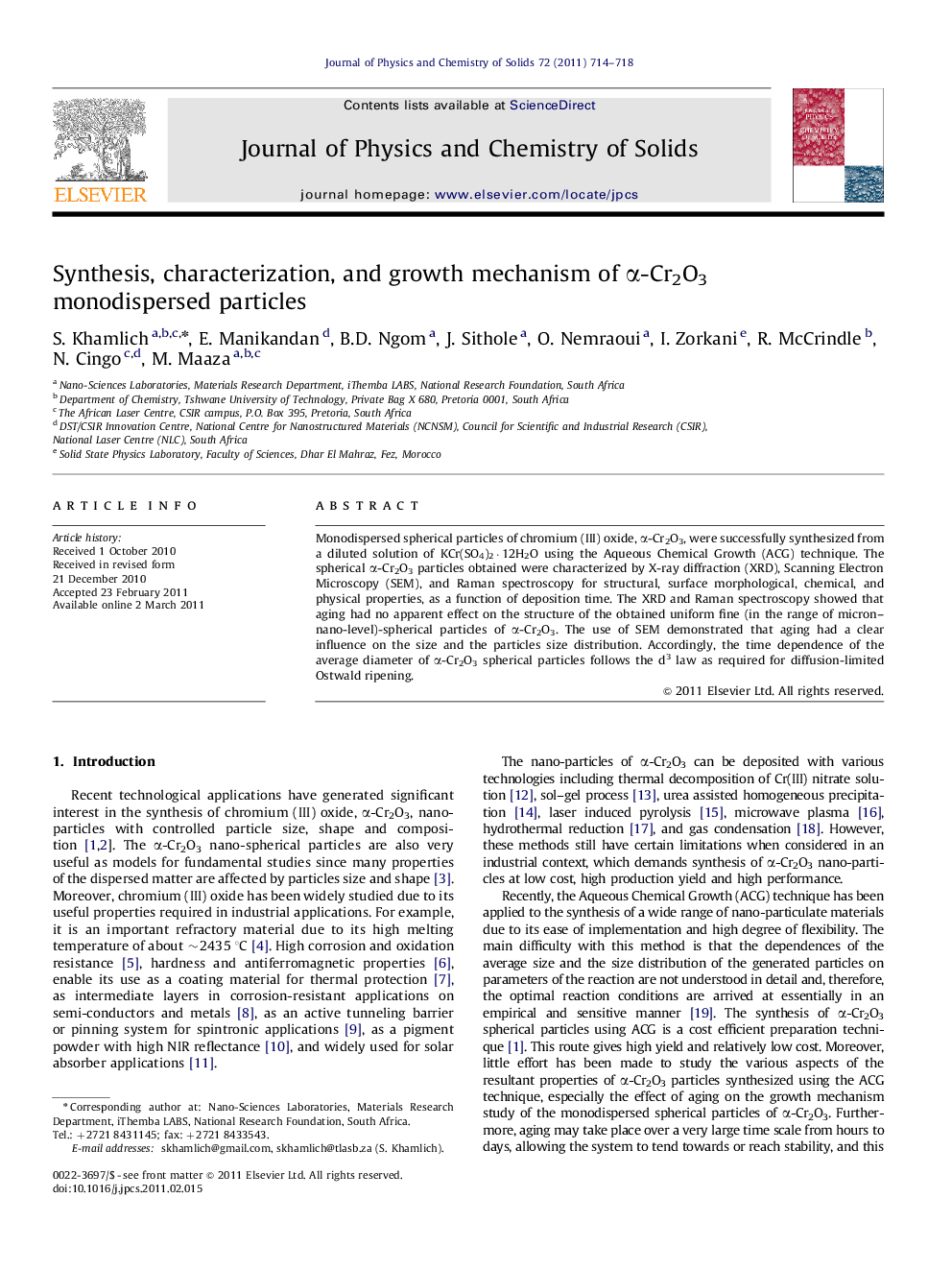| کد مقاله | کد نشریه | سال انتشار | مقاله انگلیسی | نسخه تمام متن |
|---|---|---|---|---|
| 1517026 | 1511572 | 2011 | 5 صفحه PDF | دانلود رایگان |

Monodispersed spherical particles of chromium (III) oxide, α-Cr2O3, were successfully synthesized from a diluted solution of KCr(SO4)2·12H2O using the Aqueous Chemical Growth (ACG) technique. The spherical α-Cr2O3 particles obtained were characterized by X-ray diffraction (XRD), Scanning Electron Microscopy (SEM), and Raman spectroscopy for structural, surface morphological, chemical, and physical properties, as a function of deposition time. The XRD and Raman spectroscopy showed that aging had no apparent effect on the structure of the obtained uniform fine (in the range of micron–nano-level)-spherical particles of α-Cr2O3. The use of SEM demonstrated that aging had a clear influence on the size and the particles size distribution. Accordingly, the time dependence of the average diameter of α-Cr2O3 spherical particles follows the d3 law as required for diffusion-limited Ostwald ripening.
Monodispersed spherical particles of chromium (III) oxide, α-Cr2O3, were successfully synthesized. Moreover, SEM measurements demonstrated that aging had a clear influence on the average diameter. Accordingly, the time dependence of the average diameter of α-Cr2O3 spherical particles follows the d3 law as required for diffusion-limited Ostwald ripening.Figure optionsDownload as PowerPoint slideHighlights
► α-Cr2O3 monodispersed spherical particles were successfully synthesized by the Aqueous Chemical Growth (ACG) technique.
► The growth mechanism of α-Cr2O3 follows the d3 law as required for diffusion-limited Ostwald ripening according to the Lifshitz–Slyozov–Wagner (LSW) theory.
► The understanding of the growth mechanism would enable us to design future experiments to obtain better control of the morphology of the produced monodispersed spherical particles of chromium (III) oxide.
Journal: Journal of Physics and Chemistry of Solids - Volume 72, Issue 6, June 2011, Pages 714–718